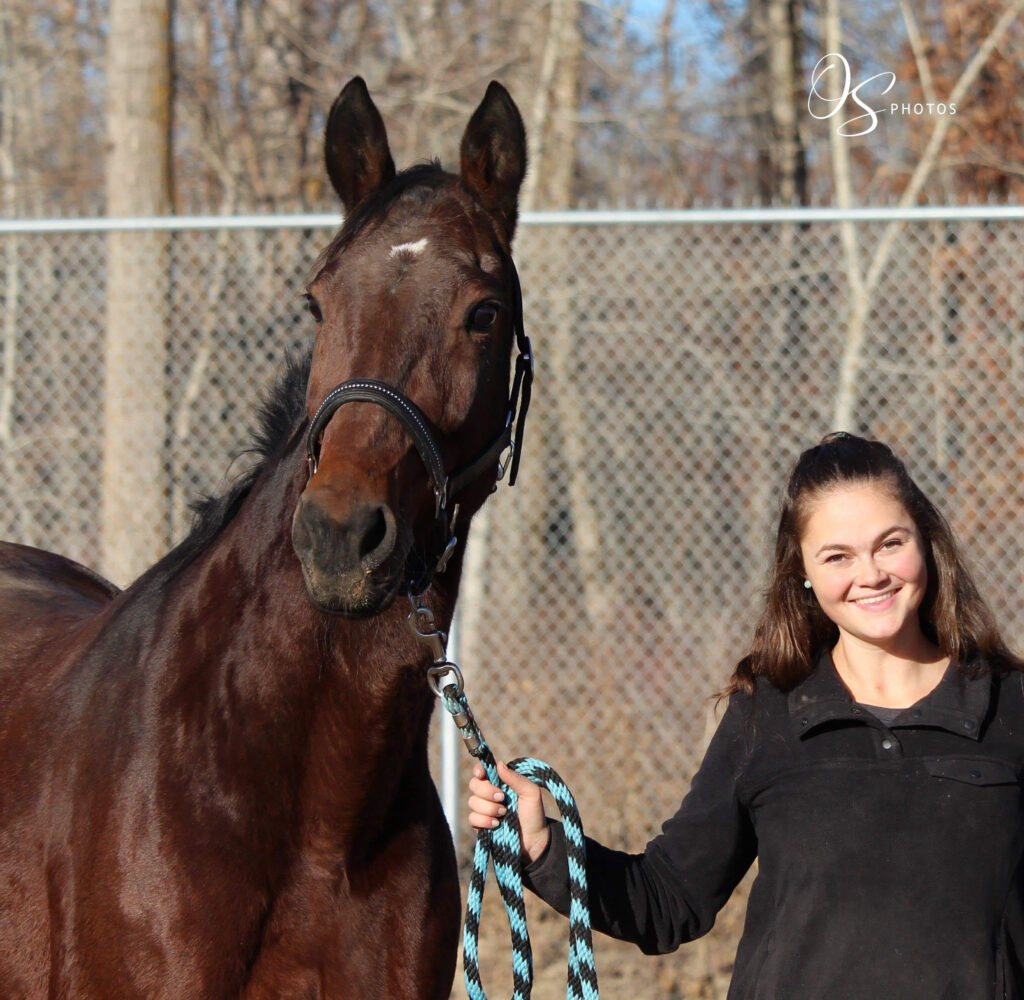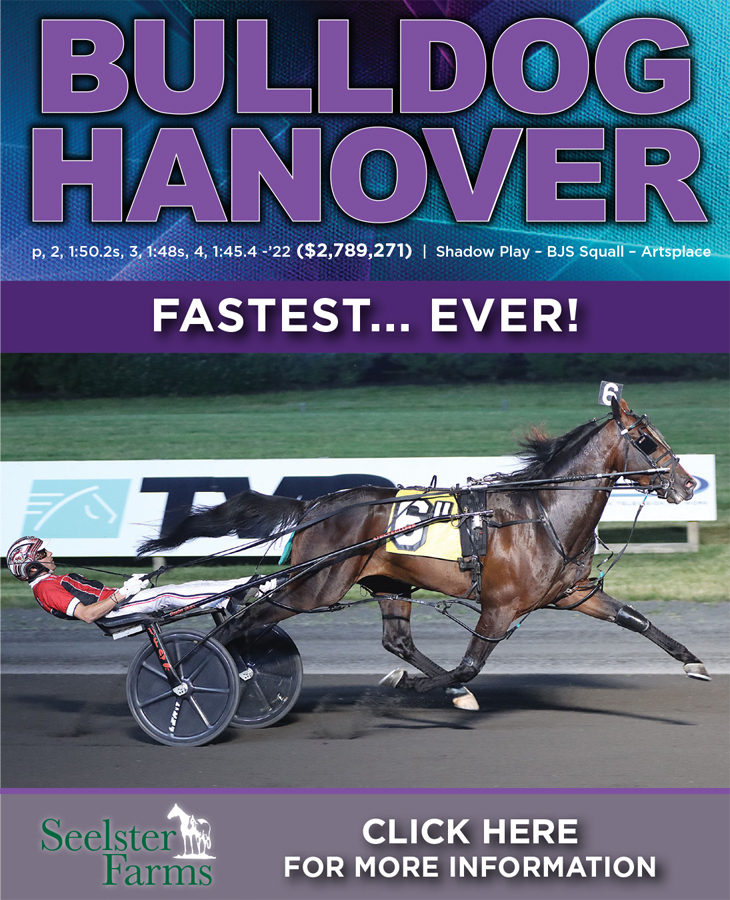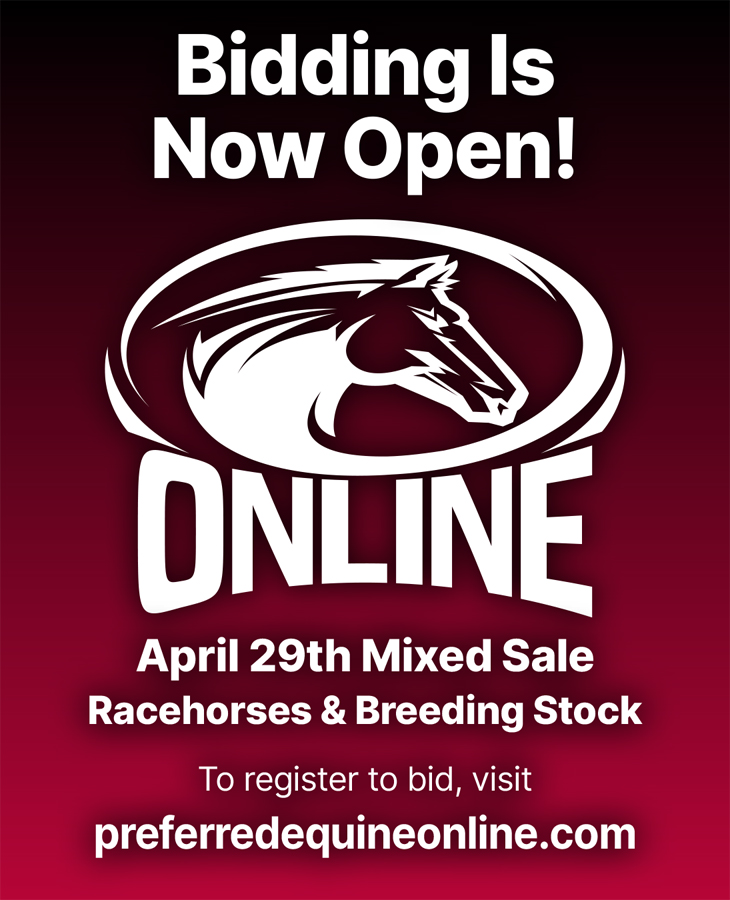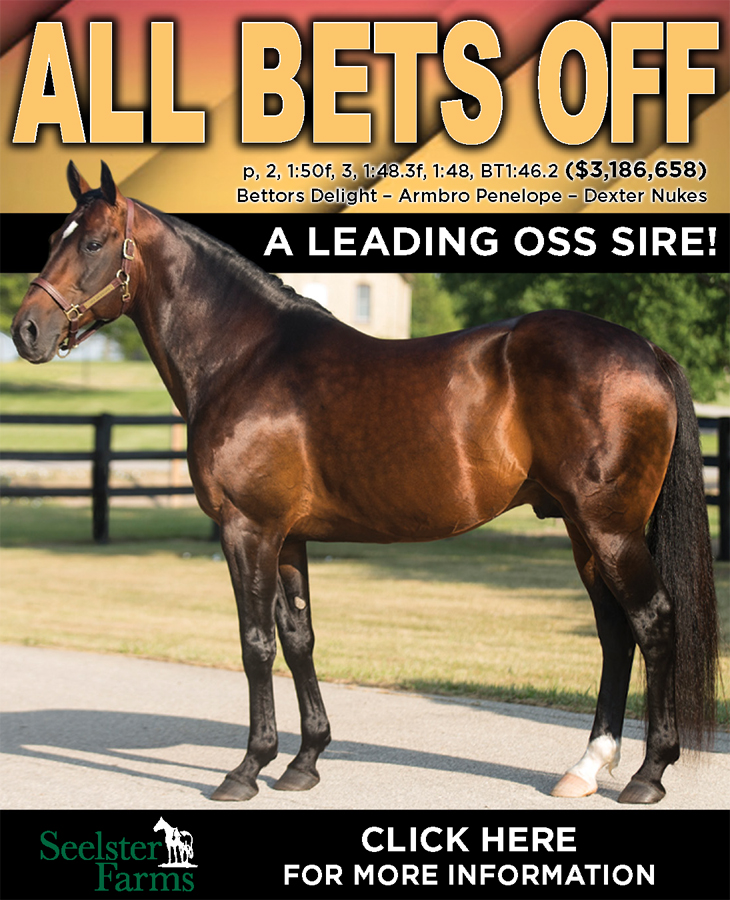

For Rebecca Kanak winning isn’t everything
by Chris Lomon
Rebecca Kanak’s first win as a trainer was twice as nice.
At the end of October, at Century Mile in Edmonton, AB, Run And Buck, a 3-year-old daughter of Domitian Hanover—Toomuchfunwithu, just missed breaking her maiden, falling a head shy of the victory.
One week later, the bay filly that Kanak trains and co-owns with fellow conditioner Trevor Williams, finished sixth as the 2-1 choice at the same venue.
The third time, however, would be the charm for both horse and trainer.
On Nov. 10, once again at Century Mile, Run And Buck, with Michael Hennessy in the race bike, lined up behind the starter in the first race, this time as the 7-2 second choice in the field of seven.
After tracking in second for most of the trip, Run And Buck came calling down the lane and went on to record a 2-length score in a time of 1:57.4.
“We had just bought her at the end of September,” said Kanak. “So, for this race, we both broke our maiden. You could see her grinding it out. I kept it all inside. With the horses I own, train, or look after, I tend to be pretty quiet if I am watching in the paddock. I am quite reserved, even if it’s obvious that they won, my nerves don’t truly settle until the results come up.”
Kanak’s biggest takeaway from her milestone victory was that it happened to be a shared achievement.
“She was two seconds faster in her win from her previous race, so I was happy for her and happy to see how we were able to prepare her,” she said. “I don’t get caught up in getting the win or not. But that was a win for the horse and for me. It is always about moving forward.”
Which has long been a staple in Kanak’s life, on and off the racetrack.


Her initial interactions with racehorses came in the form of thoroughbreds.
And then she discovered the standardbreds.
“We had harness racing in Saskatoon before my time,” she said. “I was grooming for a thoroughbred trainer for a couple of years when we still had a racetrack here. My first introduction to harness racing was working as a vet assistant. Manitoba had extended their summer fair meet to 10 race days in Saskatoon following their summer meet and we went there to do some vet work, so that’s how I first met standardbreds. I also knew some off-track standardbreds who were retired from racing, so it didn’t take me long to get hooked. I like their quiet disposition. I like the craziness of thoroughbreds, but I was really taken with the standardbreds.”
So much, in fact, that Kanak mapped out the opportunity to get more familiar with the breed.
Her travels would take her west, north and then southwest.
“I tagged along for the odd racing day after they were competing in Saskatoon and then went on to race in Calgary and Edmonton,” Kanak said. “It wasn’t that far, so I would drive up to those spots on the weekend. I got attached to a couple of horses and the following spring, there was another five-week, 10 race-day meet in Saskatoon, and I took care of a couple of my own horses there. Those horses went on to race in Manitoba that summer and after that, the stable was going to California to race at Cal-Expo. I had finished my Bachelor of Science in Agriculture at that point, so I had no commitments from December 2022 on, so I went down to California with Travis [Ellis] and his horses.”
Those adventures would play a key role in her eventual pursuit of a trainer’s license.
“It was a little bit of stubbornness on my part to want my license,” Kanak said. “I had no problems with being a caretaker, but I was starting to do more things around the barn, including helping with the training, so I wanted to have something. I wasn’t sure how long I would be in racing or go back to the real world, as I often say, but this was the best time and opportunity to go for my trainer’s license, so that’s what I did.”
Currently, Kanak has two horses in her barn, along with her caretaker duties.
Based out of Century Mile right now (Century Downs come February), she isn’t looking down the road when it comes to the training side of her career.
Instead, her top priority is in the development of her horses, the ones she owns and trains, and the others she tends to in the barn.
“I don’t have any long-term goals,” she said. “The only goal is that any horse who comes into my care, I want to do right by the horse, and I want to help them improve. I have a small barn and I am able to devote more time to them. I want to see them do the best that they can. I think it’s about pushing my boundaries a little bit, but always taking care of the horses. I’m new to the game, but I try to provide my horses with whatever they need to be able to be their best. This starts with a carefully developed and extensive nutrition program. We take care of the horses, and they take care of us.”
For Kanak, it is always about doing right by her horses.
Which is why she doesn’t use wins as the ultimate barometer for personal success.
“I have no specific targets that I chase,” Kanak said. “I want to work with each horse, to bring out the best in them, and whatever that happens to be, we can share that success together.”














